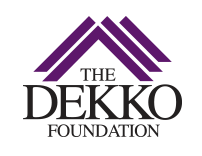Positive change
We know the work you do is important. We know that each and every day you strive to make the lives of young people better. For 39 years, we’ve been privileged to partner with organizations like yours, and that experience has shown us many are presented with a common challenge: How can we share with others the story of our unique work and the positive change it brings about in young people?
And you know what? It’s not difficult to share that positive change! That’s because you’ve already done the really hard part. You’ve identified a problem affecting young people in your community, and you’re working to solve that problem through your organization’s programs and services.
But maybe you struggle with sharing the positive change that happens in young people as a result of your work. Well, we’re here to help. We think you can share that change by considering the following five questions:
- What will change?
- By how much will it change?
- Why is that change important?
- How will you know the change occurred?
- By when will the change occur?
Why are these five questions important? For starters, you can use them to measure the effectiveness of your program or service because you’re tracking the change that’s taking place in young people. In addition, answering the five questions and sharing those answers with others can show the impact your organization is having in the community. You can explain how your organization is truly making a difference — and that can generate more support for your efforts!
To go along with the five questions, we have five tips for writing a powerful results statement about the positive change in young people you’re making or intend to make:
- Start with a VERB.
- Include a NUMBER and a PERCENTAGE.
- Share why the change is IMPORTANT (also called the SO THAT).
- Add an AS EVIDENCED BY.
- Include a BY WHEN DATE.
So, what does that look like, you may be wondering. Not to worry! Let’s walk through an example! Let’s say you’re the executive director of an early childhood center and you’ve found that you have an unsatisfactory situation, which is this: Teachers control their classrooms, however, children are not focused in them. Classrooms are loud, and they don’t engage the children.
Having had that realization, you arrive at the problem: Most teachers aren’t preparing environments that meet children’s needs because the teachers require more child development information.
After thinking it over, you decide your solution will be to send a few teachers to a conference to learn more about child development and classroom environments that meet the needs of young people.
Now let’s run it through the five questions:
What will change? The number of teachers who prepare learning environments based on children’s needs.
By how much will it change? From one to five teachers (400%).
Why is that change important (the so that)? So that teachers prepare better learning environments. So that our teachers are less controlling. So that our classrooms are quieter and calmer. So that children build skills, knowledge, and character. So that children exhibit executive function and freedom of movement.
How will you know the change occurred? Director observations and teachers’ conferencing notes.
By when will it change? By July 31.
Now let’s put it all together — and remember the five tips that will make your positive change sing!
RESULT: Increase from 1 to 5 (400%) the number of teachers who prepare learning environments based on what children need so that children exhibit executive function and freedom of movement. Evidenced by director observations and 5 teachers’ classroom conferencing notes and completed by 7/31/20.
Additional examples
Our grantmaking comes in different forms. Sometimes it’s tied to a program or service that an organization provides. Sometimes it’s meant to help an organization grow in capacity and become stronger. Sometimes it’s directed to capital projects, such as constructing or remodeling a building, or adding equipment. And still other times it’s used as operating support so an organization can go about its day-to-day work.
Depending on the type of investment you’re seeking from us, sharing the story of your positive change might look a little different. Here are a few examples:
PROGRAM: Increase from 32 to at least 125 (291% increase) the number of children who attend summer reading programs and check out books so that they build a habit of reading for knowledge and pleasure. Evidenced by children’s reading logs by 9/30/20.
CAPACITY: Decrease from 20 hours per week to 1 hour per week (95%) the amount of time the CEO and program coordinator spend addressing maintenance issues so that they can spend more time advancing the organization’s mission. This will be measured by time logs and accomplished by 1/31/20.
CAPITAL: Increase outdoor play from 150 days per year to 168 days per year (12%) so that children can:
- Have physical activity outside, this improving student learning while in the classroom.
- Develop social skills through interactive play on the playground.
- Develop motor skills.
This will be evidenced by tracking the number of school days children were able to play outside during the 2019-2020 school year and reported by 7/1/20.
OPERATING SUPPORT: Decrease the operating gap from $50,000 to at least $25,000 (50%) so that our organization works to become sustainable long term. This will be evidenced by financial statements and completed by 1/22/20.
See, that wasn’t so bad! We think by answering the five questions and remembering the five tips for success, you’ll have no problem sharing the positive change your organization is making in the community! And we look forward to helping you bring about that change!

